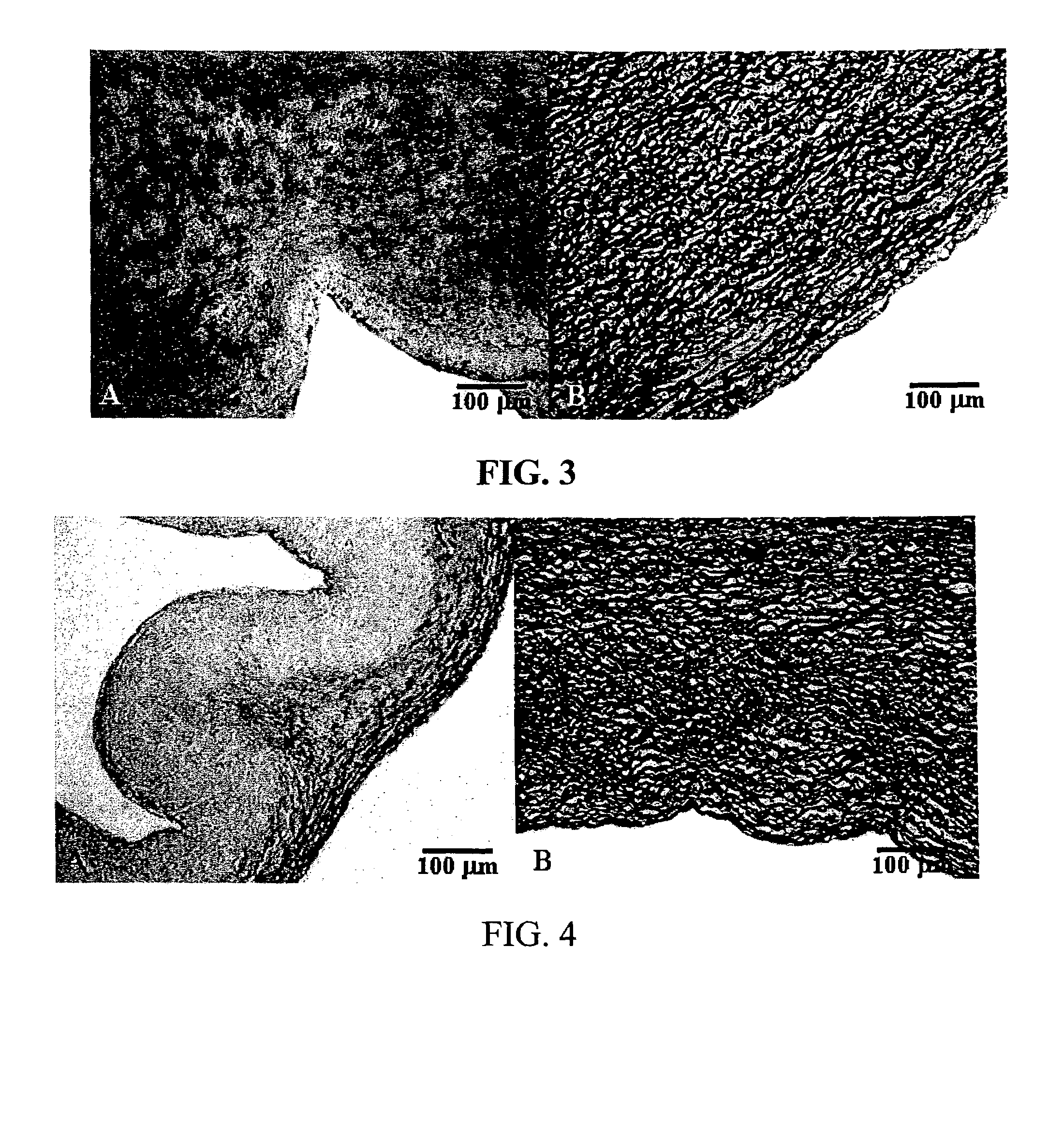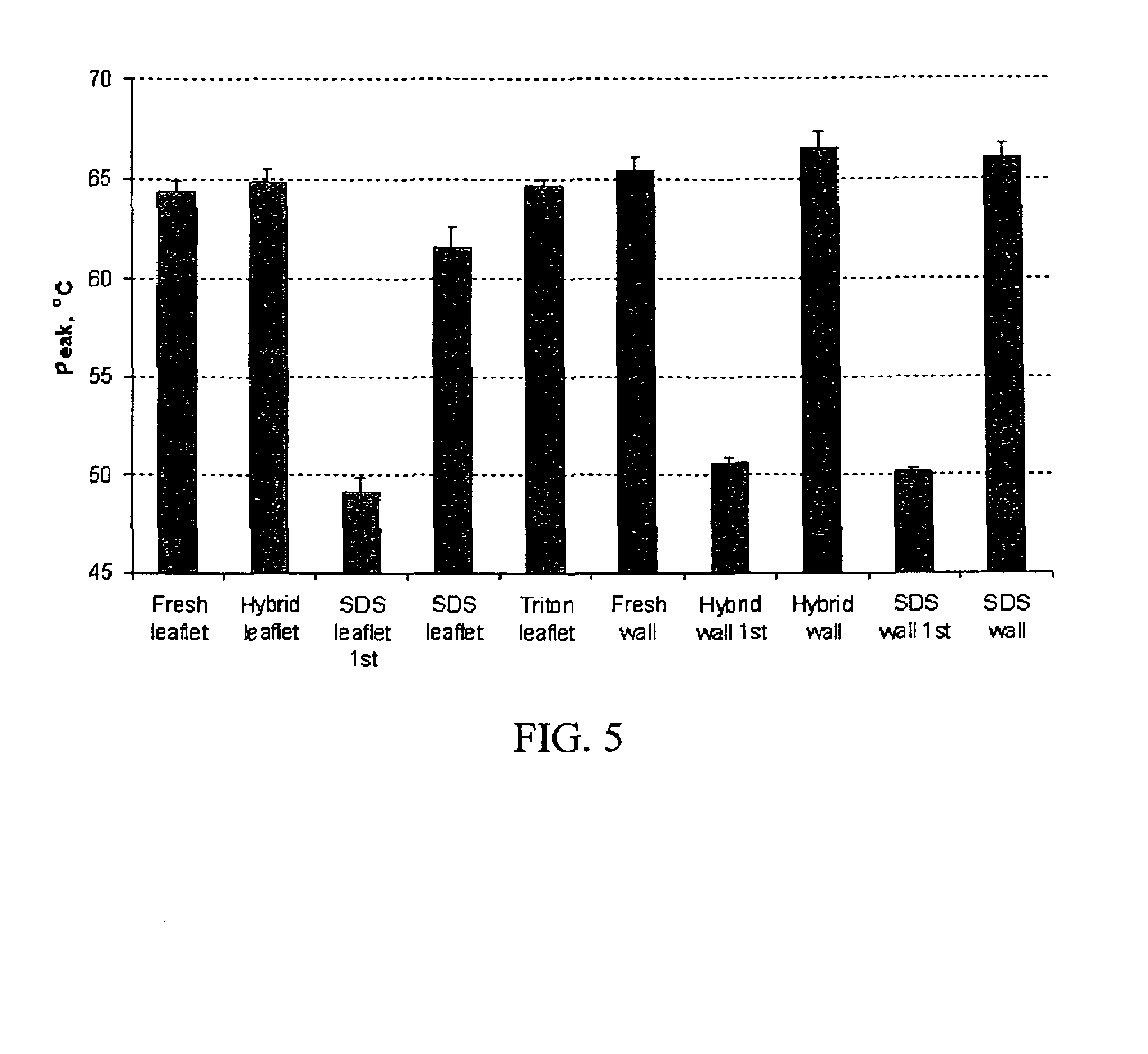Process for reducing mineralization of tissue used in transplantation
a tissue and mineralization technology, applied in the field of tissue mineralization reduction process, can solve the problems of mechanical devices, on the one hand, undergoing catastrophic failure, and prosthetic devices falling apart, and the effect of reducing the amount of tissue used in transplantation
- Summary
- Abstract
- Description
- Claims
- Application Information
AI Technical Summary
Benefits of technology
Problems solved by technology
Method used
Image
Examples
example
Enzyme Activity Related to Various Alternative Tissue Process Treatments
I. Background
[0056]Current treatments for the inhibition of calcification do not offer total protection for both leaflet and wall. Based on published reports in the literature the initiation events of calcification are most certainly cellular based. The exact mechanism for this nucleation event is unknown but may involve proteins that are involved in the use of calcium and / or phosphate in signal transduction, energy utilization, post transnational modifications of proteins or ion balance within a cell.
[0057]In an attempt to understand if these first steps could be involved in nucleation events, proteins were used to test the theory of inactivating their function by denaturation. The model system utilizes proteases to test the function of protein after treatment. These proteins are assisted in maintaining their tertiary structure by different bonding mechanisms, trypsin by hydrogen bonds and chymotrypsin by a com...
PUM
 Login to View More
Login to View More Abstract
Description
Claims
Application Information
 Login to View More
Login to View More - R&D
- Intellectual Property
- Life Sciences
- Materials
- Tech Scout
- Unparalleled Data Quality
- Higher Quality Content
- 60% Fewer Hallucinations
Browse by: Latest US Patents, China's latest patents, Technical Efficacy Thesaurus, Application Domain, Technology Topic, Popular Technical Reports.
© 2025 PatSnap. All rights reserved.Legal|Privacy policy|Modern Slavery Act Transparency Statement|Sitemap|About US| Contact US: help@patsnap.com



